In this month’s Piccolo Edition of The Flute Examiner, I wanted to interview someone who is contributing greatly to the world of the piccolo. This is someone that I have come to know and respect as a repair colleague as well as a friend. His work is continuing to place the piccolo in the spotlight. The man behind the curtain, with his humble nature and expansive technical knowledge, is nothing short of a wizard when it comes to all things piccolo. This month we feature Adam Pettry.
Keith: Many of us already know you as a flute and piccolo technician but could you share with our readers a bit about yourself and your musical background.
Adam: Absolutely! I began playing flute in elementary school and studied with Mrs. Jana Flygstad in high school. I then continued my studies with Dr. Kristen Kean at Eastern Kentucky University where I studied both Flute Performance and Music Marketing with April Brumfield. Toward the end of my degree program I started studying privately with studio flutist Jim Walker. I participated in several summer music festivals and won prizes in a handful of flute competitions.
K: How did you take the leap from being a performer into the world of owning and running your own business?
A: I once saw a chart that compared how we envision success, and the reality of attaining it. We imagine it to be a straight, upward slope, when in fact it is far more similar to a giant bowl of spaghetti. And that’s exactly how I ended up here. After my undergraduate degree, I was honestly tired and in a lot of pain. I’d suffered some injuries to my hands, and it was difficult to keep playing at such a high level. So I left music for a little while. But at some point afterwards, I remembered a conversation I had with my teacher Jim, and his advice. We knew that a playing career was out of the picture because of my hands, but that I had a knack for tinkering. He thought that I could make a career out of that, and yet still find opportunities to perform without the pressure of supporting myself as a player.
I was still unsure about how I wanted to tackle his advice, but when I met Carolyn Nussbaum at a flute festival around that time, I knew I had to take a chance and figure out what I wanted.
Working with her was an incredible experience in many ways. First, I learned a lot about the flute industry and how vibrant our community can be. It was an amazing experience that was not only extremely educational, but also taxing. Living in Texas was where I learned a lot about myself, and that I was unhappy with the direction my life had taken up to that point. But it also gave me clarity and focus that I’m now extremely grateful to have. I realized that I was still young and had the opportunity to change my life and the direction that it was going. My heart wasn’t in flute performance, or in flute sales. It was in flute repair, and Carolyn was the catalyst for that epiphany, and the drive that followed.
I left Dallas and moved to Minnesota where I studied instrument repair at the world-famous program in Red Wing. From Red Wing, I took a job as a woodwind repair specialist at Miles Ahead Music in my home state of Kentucky. The owner, Miles Davis, helped me transform from a highly skilled beginner into a rock-solid flute repairman. After working with Miles, an opportunity opened to study instrument making as an apprentice at Covey Oboes. I’d realized at that time I wasn’t happy living in Kentucky, so I took another chance, and moved to Georgia.
Ginger Ramsay, owner of Covey Oboes in Blairsville GA, is a master oboe maker, and was a remarkable mentor who spent untold hours of her time teaching her craft at all hours of the day. But the apprenticeship at Covey was one of direct exchange: knowledge for labor to help make oboes. And at that moment, I was also flat broke upon arrival. It was immediately necessary to support myself by doing repairs. I wasn’t an oboist, but I was skilled in flute repair. So I started taking in flute and piccolo repairs as I studied oboe making. I also enrolled at North Georgia Technical College to study CNC Machining with Derrick Hogan to augment the skills being taught at Covey.
My reputation as a repairman began to explode, and my skills acquired from Covey quickly transferred to piccolo work. Because there are so few piccolo specialists in the country, piccolo repairs started pouring in, and it was obvious that I needed to leave Covey to set up shop as my own full-time flute and piccolo repair business. At that point I moved to the Atlanta area, and I’ve been busy ever since!
K: Is there anything else we should know about your approach to the world of music and music business? Are there any really cool facts that might pop up on a gameshow someday?
A: I actually had a fantastic band director growing up, Nancy Drury, who encouraged holistic excellence in her students. As long as it didn’t conflict with rehearsals, we had her support to be the best that we could be in all other aspects of our lives. So throughout my younger years I had a very thorough education in the visual arts where I studied pencil drawing, watercolor, acrylics, and sculpture with Karen Lacefield, and the theatrical arts where I learned a lot about stage presence and body language from Candace Moore in productions like ‘The Glass Menagerie’ and ‘Tartuffe.’
I never imagined how influential their programs would be in my career, because as a whole, I use elements of their tutelage almost every single day.
K: Within the last two years, you have released a series of piccolo headjoints that are quickly being recognized by professionals. How did this endeavor come to fruition?
A: While at Covey, I realized someday I’d like to make instruments of my own and dabbled in that endeavor during my ‘off’ hours. At the very end of my time with Covey, a client, Angel, came to me with a piccolo that had a headjoint that couldn’t be repaired. So, I shared that information with her and told her I’d make a handful of headjoints for her to try. If she found one she liked, it was hers.
Angel had studied at Curtis in her younger years. And sure enough, she ended up choosing one of them. The remainder sold very quickly, and before I knew it, I had a waiting list, and five different designs.
K: You have rather interesting names for the different styles of headjoints. How did you choose these names and what was your concept behind them?
A: I do! I’m a total nerd. As my designs evolved, I knew they’d need names. I’ve always felt that headjoints were very personal, and the traditional methodology of ambiguous names never inspired me. I’ve always had certain historical figures who fascinated me. Thomas Edison, Nikola Tesla, Marie Curie, Alan Turing, and Katherine Goble Johnson are some of my personal heroes. All of these individuals lived lives that contributed greatly to our current society, and a great many of them overcame so many obstacles of race, ethnicity, gender, or orientation. I try to be a very inclusive person in my private life, and I wanted to honor that in my professional life.
K: I know we have chatted many times regarding repairs and I have always been amazed at the types of repairs that you are willing to take on. You seem to always find a creative way to improve on tradition or take a great idea and make it better. What drives this creative process?
A: What drives it? Neurosis, and Paranoia. Ha! Jokes aside, my creative process is a circular synthesis of all of my experiences in life guided by the approach I observed at Covey. Ginger is a brilliant woman who is full of wit and candor. All of her instruction was theoretically based, followed by application. She’d spend hours discussing pad geometry, and bore slopes, and machinery, all with the objective to produce the most elegant result possible. And I thought it was fascinating to watch her work. She could spend hours studying an instrument, and then pull out a tool to adjust a part of the bore that no one would ever think of, and it would change the instrument in miraculous ways. She pulled from all of her resources, all of her knowledge, and I learned that from her.
K: You mentioned in one of our first discussions that you had a big announcement for us to share with our readership. We can’t handle the suspense anymore….what is it??
A: It’s a project that’s been simmering on the backburner for a long time.
I’m thrilled to finally announce that I’m entering the market as a manufacturer, offering a new line of handmade, artist-level piccolos, with trials beginning in April 2018.
Even back in my undergraduate years, I felt that for far too long, the piccolo has been treated as a ‘lesser’ instrument, with fewer options and more compromises available than solutions. For professional players, we have been left with a small handful of quality brands that offer one acoustic model, with the opportunity to choose limited add-ons at a premium price. Many of these upgrades are honestly crucial to play the instrument at its best acoustically and practically.
The Pettry Prestige Piccolo is our first acoustic model, and it is designed to offer an instrument with presence, character, clarity, and stability. After years of acoustic and mechanical research spent studying the craftsmanship of world class makers spanning over the past century, the Pettry Prestige Piccolo is the newest development in the modern piccolo. Blending together the brilliance of the best piccolo-making minds in history, we have created an entirely new generation of instruments where compromise isn’t an option.
Handcrafted from aged hardwoods, the Pettry Prestige Piccolo is available in Grenadilla, Cocobolo, Kingwood, and Rosewood, with head joints additionally available in Olivewood, Mopani, and Lignum Vitae. Featuring all sterling silver keywork, our piccolos benefit from a fully pinless design for optimum rigidity, durability, and precision of adjustment. Furthermore, every Prestige Piccolo showcases a single thumb-key tonehole instead of the traditional double tonehole design, simplifying and stabilizing the acoustics of the instrument, while also rendering options such as the High G# Facilitator obsolete.
Every Pettry Prestige Piccolo is built with an eye on the future lifecycle of the instrument. When toneholes are made of wood, moisture causes the pores in the wood grain to eventually open, creating microscopic pinhole leaks that undermine the efforts of the player, and the repair technician. To prevent this, we’ve created Leak-Resistant toneholes that feature fully synthetic tonehole rims that are fused into the wood itself.
Where other companies allow you to upgrade your instrument with features, at Pettry Piccolos, we believe that these options are acoustically necessary for a fully functioning instrument. Every Pettry Prestige Piccolo features an all sterling silver, fully pinless mechanism with a vented left-hand C key, Split E Mechanism, and a Brossa F# key. It will feature cork pads below the waterline for moisture resistance, and Straubinger pads above the waterline for an optimal balance between response and endurance. Additionally, every Pettry Prestige Piccolo will include a solid hardwood case, and a custom couture leather case cover made by FluterScooter.
K: So, what is next for you and your company? What are some of the goals for yourself and your products?
A: What’s next? Great question! One which I’m excited to see for myself! In the short term, I’m planning to exhibit at some regional flute shows and to start exhibiting at the National Flute Association as my company grows. But in the long term? I’m not sure. My dreams are small.
I just want to live a quiet life where I can make pretty things. I’d love to grow to where I can have a small team of artisans like myself that want to better the world around us.
I’ve always heard that you’ve ‘made it’ when you have the ability to give back to the world around you. So, if I had the opportunity to have themed months where I could donate portions of sales to appropriate charities… Goble headjoint sales in February to support young minorities studying the arts, Turing headjoint sales in June to HIV research, Curie Headjoint sales in October to breast cancer research, so on and so forth… I’d really love to do that someday.
K: It really sounds like you have put a lot of thought into your business model and product line, not to mention your future and the direction of your company. We really appreciate you taking the time out of your busy schedule to share your great news with us. We would like to wish you the best of luck with all of your wonderful endeavors. Please keep us posted on anymore new developments, we will definitely be following you and your progress!

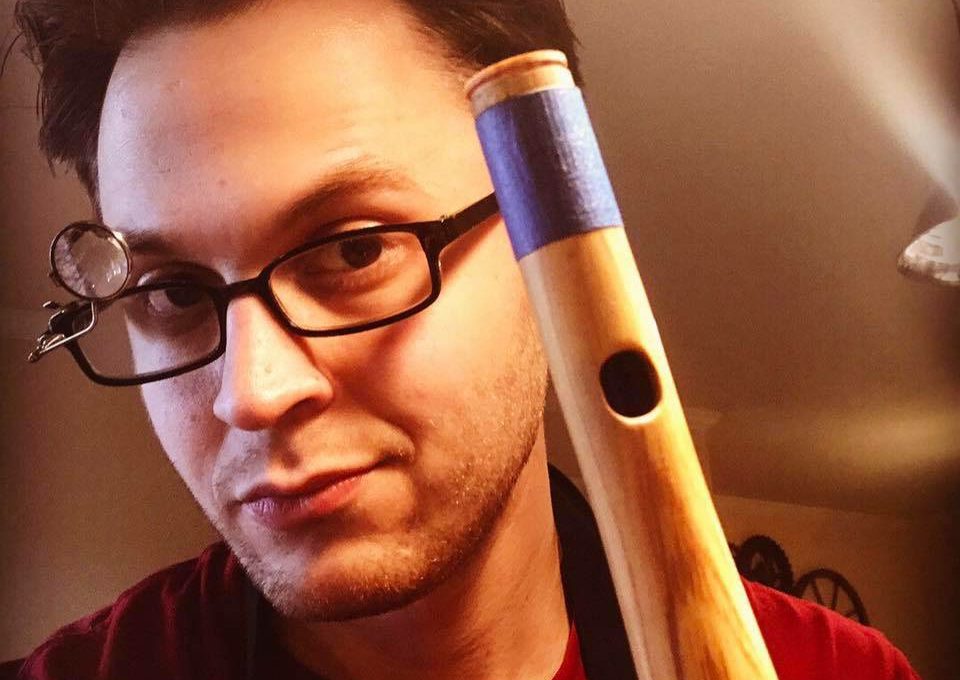
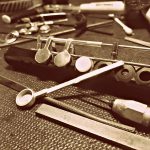
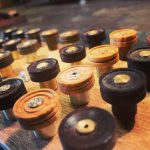
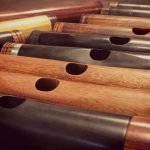
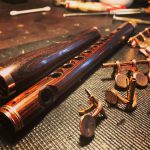
Thank you for sharing your story.